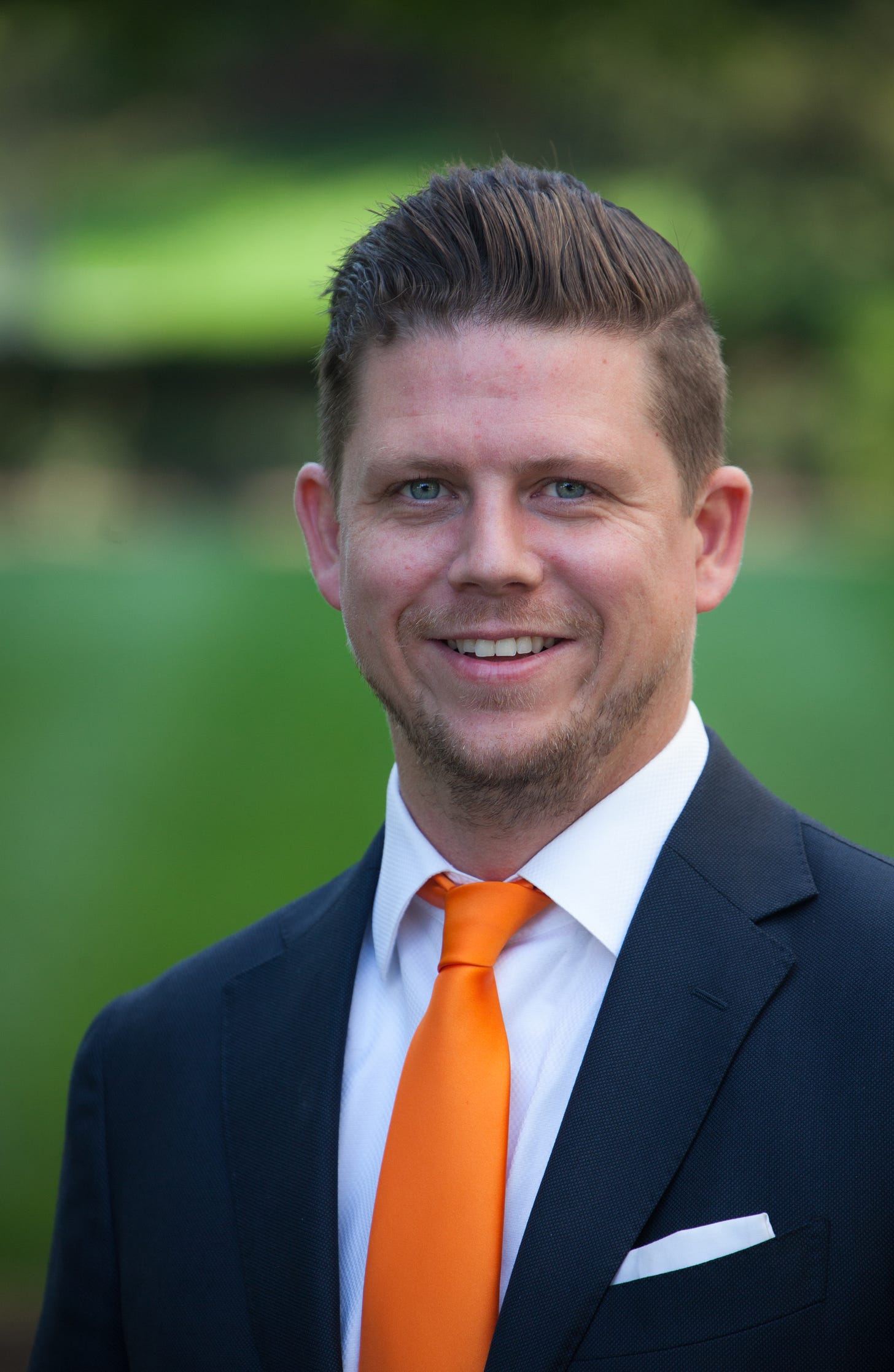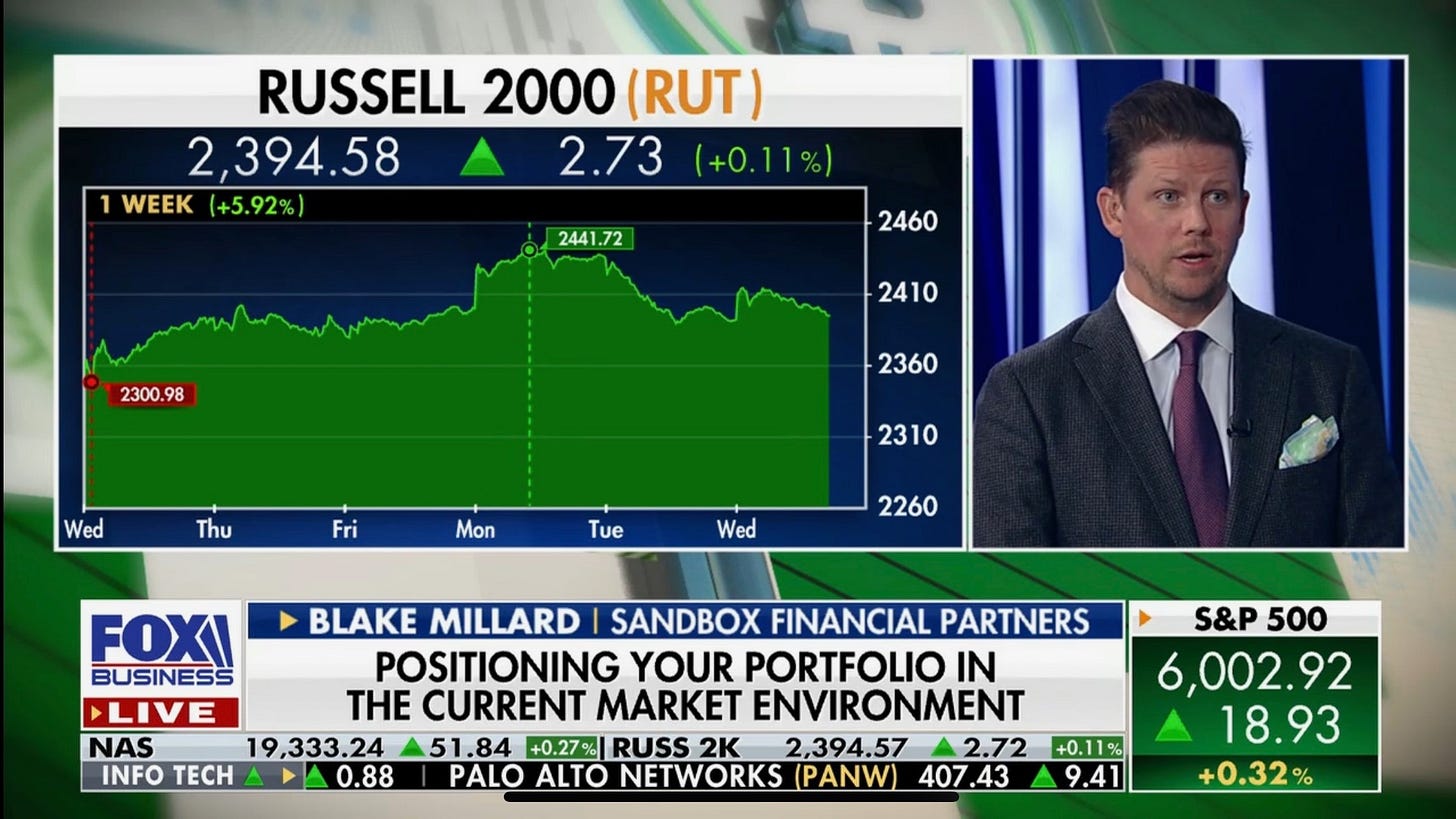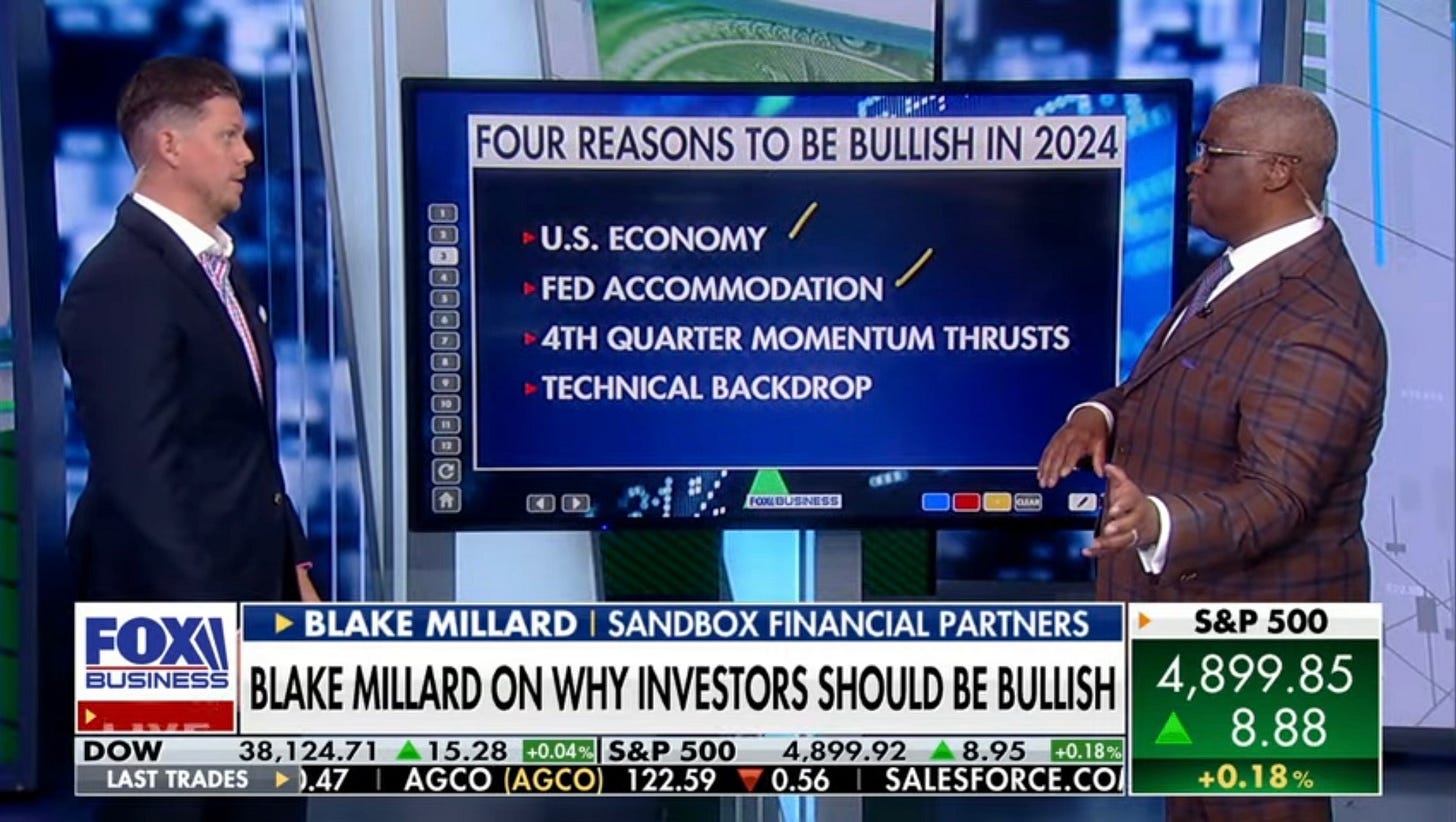Blake Millard’s Investment Strategy: Managing Risk, Emotions, and Wealth
Sandbox Spotlight: Blake Millard
For roughly 25 years, a successful dermatologist did just about everything by the book. He built his practice, worked hard, and saved every dollar he could. Through discipline, he amassed $5 million in wealth, without investing in the market.
In 2022, when the dermatologist began working with Sandbox Financial Partners, the headlines were grim. Markets were tumbling, inflation was soaring, and financial pundits predicted doom. Yet this first-time investor took the plunge under the guidance of Blake Millard, the firm's Director of Investments. As 2022 ended, Millard and the Sandbox team invested his assets strategically. Two years and a 40% return later, the dermatologist had an epiphany that would haunt many careful savers.
“He said it makes him nervous to have money out of his control because it’s not sitting in cash, but he finally realized the power of compounding,” Millard says. “With a heavy sigh of regret, he said to us, Man, I could have $20 million by now if we had been doing this together the past 25 years.”
The story captures the essence of Millard’s investment philosophy: Sometimes, the biggest obstacle to building wealth isn't market volatility, earnings reports, or economic uncertainty. It’s regulating our own emotions. In this case, it was risk aversion. For others, it’s the fear of missing out, chasing hot stocks, or over-trading.
After nearly two decades of managing client money at firms like UBS Private Wealth Management and now Sandbox Financial Partners, Millard has made it his mission to help investors get out of their own way and let the power of compounding work its magic.
In this interview, Blake discusses his journey, how he helps clients through all kinds of dynamic markets, his investment strategy, and more.
When did you become fascinated with markets?
I was always fascinated with math and numbers as a kid, excelling at each step in elementary and junior high. In fact, I see much of myself in my 9-year-old son Hudson, who taught himself 3rd-grade math during the pandemic at ages 4 and 5. And yet, when I attended the University of Michigan in Ann Arbor, I somehow found myself double-majoring in philosophy and history.
The light bulb didn’t turn on until I was too far down the pre-law rabbit hole when when I realized I made a huge mistake. Two summer internships at law firms were enough to convince me to make a pivot. And just in time, because I graduated in 2007 at the heart of the Global Financial Crisis when precisely no one wanted to hire a bright-eyed and bushy-tailed young graduate with zero market experience.
What methods do you employ to assess and mitigate risk within client portfolios?
We employ a variety of tools to manage risk in client portfolios.
Diversification to ensure portfolios are properly diversified across asset classes, sectors, styles, factors, and geographies; here we utilize a Modern Portfolio Theory framework
Stress testing / scenario analysis to assess how managers and portfolios would perform under extreme market conditions or hypothetical scenarios; here we use Monte Carlo simulations, historical event backtesting, and platforms like BlackRock’s Aladdin.
Performance and risk metrics to measure the return on investment relative to the level of risk to help gauge the efficiency of the portfolio; we have tools in Orion and 3rd party providers such as YCharts to help assist in these endeavors
Performance attribution and benchmarking to evaluate the sources of returns and identify risks relative to benchmarks to keep ourselves honest; this process also ensures that strategy aligns with client goals
Do you specialize in certain types of clients?
We work with clients from all walks of life and ages. Those building wealth and those distributing wealth. People who work in corporate and people who are self-employed. People who are experienced with investments and people with no investment experience.
Building a financial plan and a bespoke solution for a specific client’s unique financial background is an exciting experience. The thrill I get from the design and construction process to the accumulation phase many years into the future is an incredibly organic and gratifying feeling. Helping someone reach their financial goals is why I do what I do.
How do you help clients?
No matter the size or scope of the portfolio, it’s all about working with someone like us to get educated, build a plan, and create the appropriate strategy for you. We help people make better decisions. Hiring a professional won’t change the entire outcome of your financial path, but it can 1) make the ride more palatable and 2) keep you committed to your plan. As I always say, we help clients “stay on target.”
Tell us about your wonderful post about your late father, “Life moves pretty fast,” and what prompted it.
As someone who consumes and produces financial content 24/7, it’s hard to step outside your comfort zone and write about something deeply personal and open yourself up to an audience that knows very little about you on a personal level. My father passed away suddenly in the spring. I was not prepared for this. No one is.
On the one hand, I was a grieving son; on the other, I was the executor and personal finance guru who needed to step up and help my mom and broader family. Threading these two roles has been quite challenging. That piece was as much therapy as a statement to help prepare others.
The lesson: life goes quick, we’re all busy, and we often get caught up in the noise. I’m guilty of it, too. Instead, let’s slow down the meaningful moments with family and friends. Be more present. I’ve started meditating to help here.
What are some common issues or challenges you see clients face about their overall financial life?
Investors make the same mistakes as they did decades ago. People can’t help themselves. It’s why markets are inefficient and the reason behavioral finance is just as important as traditional finance. It’s also why I encourage most people to hire professional help in the same way you hire an electrician when the lights go out or you hire an attorney when you encounter legal trouble. You are hiring someone for guidance, their experiences, and to protect you from yourself.
Do you want to share anything about lessons or your life journey?
I’m teaching my four kids to invest. My oldest son Hudson, who is 9, is learning basic chart patterns right now, and he owns consumer-facing names like Ferrari, Apple, and Domino’s Pizza. I funded each of my kids a $5,000 account, so the stakes are low.
These won’t be get-rich accounts, but they’re for teaching them how to invest. They really wanted to buy Nike stock, but I explained to them that there are good companies, and then there are good stocks. Those aren’t the same thing. So we’ll talk about why that’s been such a disastrous stock.
What are your favorite books (or other educational resources) within finance and elsewhere?
Everyone must read Nick Maggiulli’s book titled Just Keep Buying. Those three words underpin my personal investment philosophy and framework. It doesn’t matter about presidents, politics, interest rates, market breadth, or whatever. Just invest a little every month over decades. Don’t time the market; just keep buying.
Read Blake’s Market Insights & Get Expert Guidance
Blake Millard shares daily insights on investing, behavioral finance, and market trends in The Sandbox Daily.
For more expert guidance on building and managing your wealth, visit Sandbox Financial Partners or follow Blake on Twitter/X.
Ready to Take the Next Step?
Schedule a call with the team at Sandbox Financial Partners to start building a financial strategy tailored to your goals.






